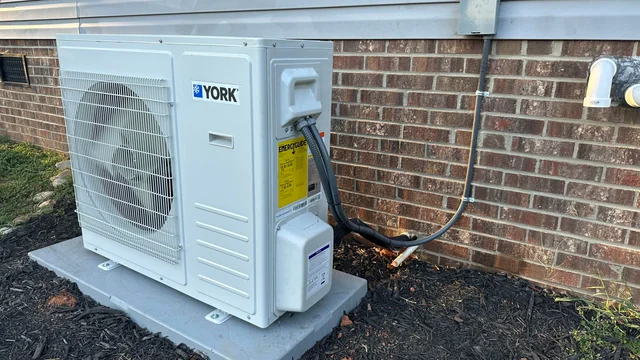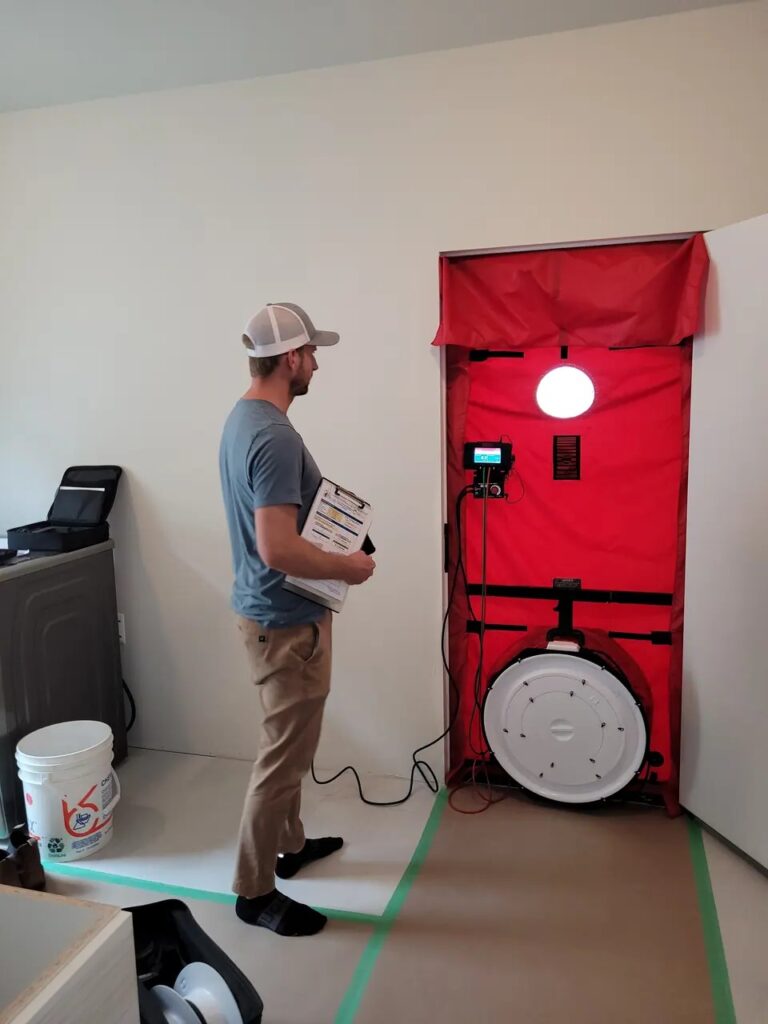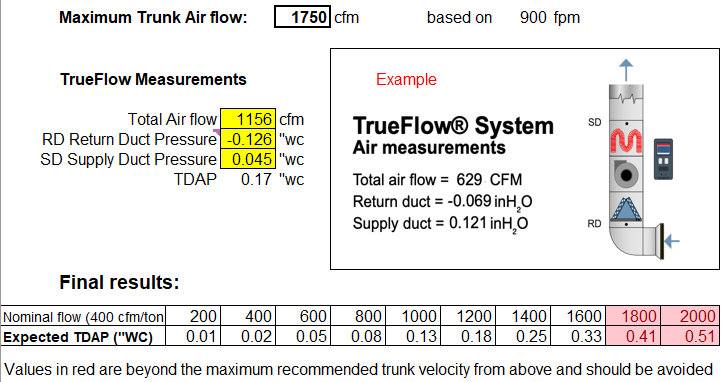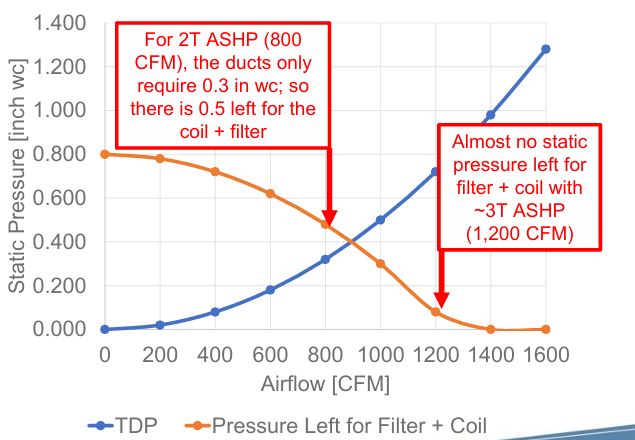The Truth About Proper Heat Pump Sizing: Why Testing and Calculations Matter More Than You Realize

If you’ve ever replaced a furnace or installed a heat pump, you’ve probably heard the phrase:
“We’ll size it based on what’s already there.”
Sounds reasonable, right?
Actually, it’s one of the biggest mistakes in the HVAC industry.
Here’s the truth:
Every home is different and no two heating systems are ever exactly alike. Without proper testing, even the best equipment can underperform, run inefficiently, or cost you more to operate & maintain over time. This means you can spend precious pennies on the cadillac of equipment and never really benefit from the value of your equipment upgrade.
Let’s unpack how accurate heat loss calculations and duct flow testing can prevent that, and help your heat pump reach its full and expected potential.
Why Proper Heat Pump Sizing Starts With an in-person Site Visit
Online calculators and rule-of-thumb estimates don’t tell the whole story – not even close. To size a heat pump (or any HVAC system) correctly, we need to know how your home actually behaves in real-world conditions.
That’s why every CSA F280-12 heat loss and heat gain calculation we perform begins with an on-site visit.
We gather the details that truly drive performance:
- Window types and efficiency ratings
- Insulation values of foundations, walls, & ceilings
- Orientation, geometry, and heated volume of your home
- Blower door test results to measure real infiltration and air leakage – this one is huge and can never be measured or properly estimated without doing the test.
If the home is in appropriate condition to do so, we’ll perform a blower door test during the visit – giving us actual airtightness data, not assumptions (most people arent doing this and it makes a massive impact in correct sizing). There are a few situations where that’s not possible (say, during renovations), in this case we have to use our experience to estimate air leakage based on the home’s age, construction, and condition.
The result? A data-backed, customized load calculation that tells you exactly what your home needs, not what a spreadsheet, or age-old “rule of thumb” guesses.

Why Energy Advisors Bring More Accuracy (and with it, Peace of Mind)
As Registered Energy Advisors(REA), we’re trained and tested under Natural Resources Canada (NRCan) standards. REA’s have the option to undertake additional course work and testing to become versed and certified in the CSA F280-12 standard for heat load calculations. This is the required heat loss/heat gain calculation standard for Part 9 residential buildings in Canada.
This means:
- Your load calculations are recognized by rebate programs and permit authorities.
- The math behind your system design is verified and defensible.
- You can trust that your equipment choice will actually perform, not just meet code.
Put simply: we don’t sell equipment – we sell clarity.
That’s what allows homeowners, HVAC contractors, and builders/renovators to make better, data-driven decisions.

Duct Flow Testing: The Step Everyone Skips (But Shouldn’t)
Even the most correctly-sized heat pump won’t perform well if the ductwork can’t handle the airflow it produces.
Using a TEC TrueFlow® Grid from Minneapolis Blower Door, we measure the actual airflow your ducts can deliver. This test can reveal critical performance limits before installation.
Here’s why that matters:
- Furnaces and heat pumps move heat differently. Furnaces blow hotter air and need less airflow.
- Heat pumps blow gentler, cooler air and need more airflow to deliver the same comfort.
- Older duct systems often can’t handle that increase in air flow that happens when they upgrade their equipment to a heat pump, which can lead to excessive noise, inefficiency, or uneven heating.
By measuring the total duct pressure (TDP) and airflow, we can tell you:
The maximum size of heat pump your ductwork can support
Whether modifications are needed for best performance
How to avoid system noise, comfort issues, and premature wear

The Real-World Benefits
When we combine a home’s blower door data, CSA F280-12 load calculations, and duct flow testing, we’re not just checking boxes… we’re designing for comfort and efficiency that last.
For homeowners:
- You get accurate sizing, lower bills, and peace of mind.
- Your system runs quieter and lasts longer.
- You can qualify for rebates with proper documentation.
For HVAC contractors, builders & renovators:
- Fewer callbacks and performance complaints.
- Confidence that your installation meets manufacturer and rebate requirements.
- Data that backs your equipment recommendations with proof.
- Happy customers means more customers
Red Flags To Look out For
There are few things to consider when choosing the right company to work on your home, particularily when it comes to your heating and cooling systems.
1. How are they planning to size your new system? If the contractor you are working with wants to use “rule of thumb” sizing based on square footage, or based on the existing equipment size, we recommend getting a second opinion or contacting someone who wants to do it properly. Typically HVAC equipment in our existing housing stock is oversized. Replacing it without due diligence could result in added upfront expense and ineffecient operation of new equipment due to short cycling.
2. If the contractor you plan to work with is perfoming a CSA F280-12 heat load calcuation, ensure they are gathering the right information with an on site visit. If they use a company that performs a “remote” calcuation this, for me, is a red flad. Ask yourself, how can anyone gather enough accurate information about the home without visiting and testing the house? The answer is, they can’t.
The Bottom Line
Proper testing isn’t extra — it’s essential.
By taking the time to measure, test, and verify, we eliminate the guesswork that causes so many heat pump headaches.
If you’re planning a heat pump upgrade or want to partner with an Energy Advisor who provides this level of precision, let’s talk.

📞 778-867-0242 or brett@thriveenergyinc.com To book your CSA F280-12 load calculation and duct flow test today.
We’ll help you maintain health, comfort, efficiency, and long-term confidence in your home one tested home at a time.
About the Author
Brett Tracy is the Principal Energy Advisor and co-founder of Thrive Energy Inc., a passionate team of building science professionals based in the Okanagan. Brett has always believed that great homes should keep people healthy and comfortable, and be kind to the environment too. His work is driven by a love for sustainability and a commitment to helping homeowners and builders make smart, energy-efficient choices that last.
As a CHBA Net Zero Energy Advisor, Integrated Design Facilitator, and Multi-Unit Residential Building (MURBs) specialist, Brett brings both technical know-how and a collaborative approach to every project.
Through Thrive Energy Inc., he and his team specialize in BC Step Code compliance, deep energy retrofits, CSA F280-12 heat loss/heat gain calculations, blower door testing, and duct flow diagnostics — proudly serving homeowners and contractors throughout Kelowna and the surrounding areas.
When he’s not diving into data or on site with builders, you’ll find Brett enjoying the outdoors with his family throughout the beautiful province we call home.



